Text
"One small and yet significant change to the appearance of coins [during Edward IV's reign] was the development of more advanced initial marking at the beginning of the legends. In previous reigns initial marks, although showing some variety, always took the form of a cross. Under Edward new devices such as the Yorkist rose or the lis began to be used, beginning what would develop into a large and complex system by the late Tudor and Stuart periods."
-Dr. Richard Kelleher, "Kings and Coins in Medieval England: the Yorkist Kings"
7 notes
·
View notes
Text
In that search for allies, in particular against France, English rulers had in the past largely confined themselves to two main sources: the Iberian peninsula and the Low Countries. But if any kind of effective encirclement of France was to be considered, or a joint north–south pincer-style operation undertaken, then an alliance – or at least a guarantee or likelihood of neutrality – might be sought with one or more of the Italian principalities or republics. And in the changed and changing political conditions of the later fifteenth century, a permanent English presence at the papal court in Rome, backed by Italian agents and allies, was also increasingly desirable [...] In 1463, both Ferdinand I, king of Naples, and Francesco Sforza, duke of Milan, became knights of the Order. Their evident value as potential, if not actual, opponents of French claims to Aragonese held Naples on behalf of the house of Anjou, and Sforza’s succession to the duchy of Milan in the face of French-backed Orleanist rivalry in 1450, made them potentially useful allies. Then, in 1474, Federigo da Montefeltro, duke of Urbino, was elected, while in 1480 Ercole d’Este, duke of Ferrara became a member. A greater presence of ‘foreigners’ among the knights of the Garter, especially under Edward IV and, to a slightly lesser extent Henry VII, may be revealing of England’s changed situation. Under Edward, eight were elected, of whom four were Italian, three Iberian and one Burgundian (Charles the Bold). Under Henry VII, six were elected, of whom three were Habsburgs (and therefore Austro-Spanish), two were Italian and one Scandinavian.
— Malcom Vale, 'England and Europe, c.1450–1520: Nostalgia or New Opportunities?' | The Fifteenth Century XIX: Enmity and Amity
5 notes
·
View notes
Text
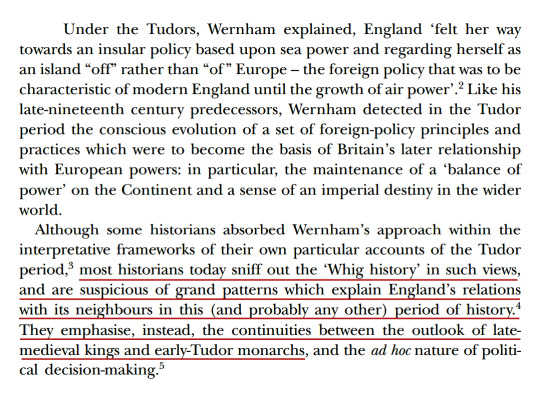
— Glenn Richardson and Susan Doran, Tudor Monarchs and their Neighbours
27 notes
·
View notes
Note
hello! I’m a literature/history student who knows next to nothing about tudor history or the english renaissance (beyond simple basics). I’ve gotten more into it because I’m taking a shakespeare class and that’s all relevant historical background, but I’d love to get more in depth. obviously you don’t have to answer, but I was wondering if you had any books/documentaries/articles that I could maybe start with? or some writers of the time that I could become acquainted with. I’d just like to get a better understanding of the era, so any help would be appreciated :)
hmm if you’re doing a shakespeare class, i would recommend focusing on elizabethan (and jacobean) research primarily, as that’s more contemporary to shakespeare! unfortunately, that is not really my area, so i don't have specific recommendations for you.
i haven’t read shakespeare on an academic level in years — but which plays you do will likely influence your reading list. so i don’t know how helpful my recommendations would be, but off the top of my head:
tudor england: a history, lucy wooding as a good overview - i don’t agree with everything in it, but i think it is a good, accessible, up-to-date summary of the period!
shakespeare and the italian renaissance, michele marrapodi is good! personally i would recommend reading about italy and the mediterranean; shakespeare himself clearly did not know much of italy, and the mediterranean often exists as a semi-fantastic, exoticised other world. but italy and tropes about italians were influential for early modern writers; so reading up on the renaissance — including petrarch as an example — might be helpful. (it might help to look into commedia dell’arte, too.)
black tudors, miranda kauffman, and blackamoores, onyeka, for discussions of race and anti-black racism. i haven’t got a specific book to recommend but definitely be conscious of how prevalent antisemitism is in shakespeare’s works, alongside other racialised stereotypes and epithets.
gender in early modern england, laura gowing. gender and gender expression is played with a lot in shakespeare, and they had some genuinely interesting feelings regarding crossdressing, and subversions of gender roles. off the top of my head there isn’t a perfect book that covers everything, but gowing’s work is pretty good!



as for the english/northern renaissance specifically, i’ve not actually read many broader overviews (and not super recently), and i don’t know how specific you want to go:
the english renaissance 1500-1620, andrew hadfield or a companion to english renaissance literature and culture, michael hattaway were solid as starting points.


13 notes
·
View notes
Text



JACOB COLLINS LEVY as HENRY VII in THE WHITE PRINCESS (2017)
62 notes
·
View notes
Text

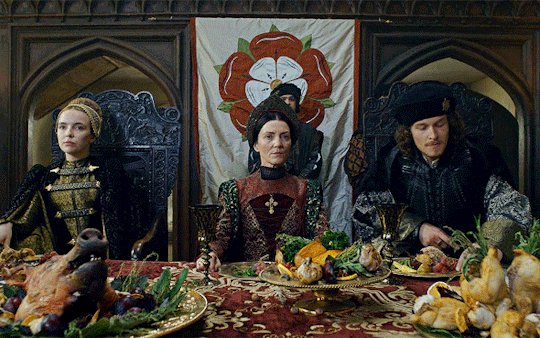
ELIZABETH OF YORK, MARGARET BEAUFORT, AND HENRY VII
THE WHITE PRINCESS (2017)
#awkward to say the least lol#elizabeth of york#margaret beaufort#henry vii#show: the white princess
144 notes
·
View notes
Text





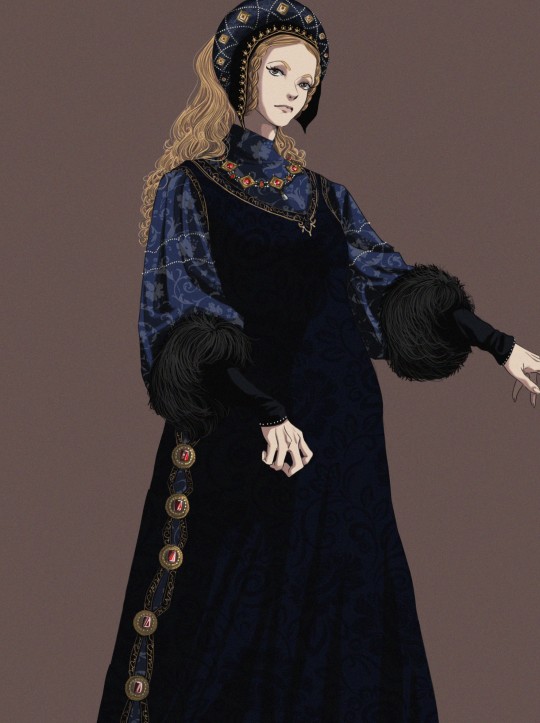
From sketch → 2d character design illustration.
Elizabeth of York edition.
Because why not?
92 notes
·
View notes
Text
The role of the queen as landlord was unusual: she was the only married woman in the realm to hold lands outright and thus she held a position similar to a femme sole, a position generally held only by spinsters or widows. Amongst the landowning classes, a femme sole could take livery and seisin and alienate her lands. However, upon marriage, a woman became a femme couvert and ceded control of her lands into the hands of her husband. So how exactly could a queen, by rights a femme couvert, hold the position of an unmarried woman in terms of her properties? Seah discusses the legal framework of the queen’s position as a landholder in the ffteenth century, noting that the royal grants awarding the queen her properties emphasised the queen’s authority over those lands and estates granted to her. More specifically, her authority was highlighted through the clarification of her rights and responsibilities as landowner and in identifying the autonomy of the queen’s administrative officials, and evidence of this can be seen across the records of the later medieval period. However, though the queen held her properties outright this did not mean that she held the legal status of femme sole. Rather, the queen’s position was unique in comparison to all other married women: though the queen was legally a femme couvert, her status as the wife of the king elevated her position to enable direct ownership of her properties. This legal fexibility further highlights the queen’s special status: as a married woman she held and maintained extensive estates akin to the greatest of male magnates, and as the king’s wife her office and position was greater than any other noble landowner in the country.
She was, in essence, a “superautocratic” woman simultaneously maintaining her position as a wife, the embodiment of a royal office, and an independent landlord.
— Katia Wright, “A Dower for Life: Understanding the Dowers of England’s Medieval Queens” | Later Plantagenet and the Wars of the Roses Consorts: Power, Influence, and Dynasty (2023)
74 notes
·
View notes
Note
Margaret Beaufort and Elizabeth of York both have the right to "female celibacy" (without the need for men to allow the sale of their property), is this a common right of the Queen of England?
Hello! I think you might have meant that both Margaret Beaufort and Elizabeth of York were 'femmes sole', a legal position that meant they were not under the 'couverture' of their husbands to engage in legal transactions. Yes, that was a common position that queens held even though they were technically 'femmes couvert' — i.e. when a regular woman married in Medieval England, she woman would cede control of her lands into the hands of her husband though that's not what happened to queens who held and administred their own dower lands and properties. The way queens were able to do it is explained here by Katia Wright. Essentially a queen had special status compared to other married women because of her elevated position in society. What was unusual about Margaret and Elizabeth's situation was Margaret being declared a femme sole (not the other way around), considering she was neither a queen nor a widow/spinster at the time. The act that declared Margaret a femme sole enabled her to keep her properties independently. That must have been an incredible comfort to her when we consider that just a year before the former king had stripped her of all of her lands and had given them to her husband instead. In a way, she was vindicated.
7 notes
·
View notes
Text
Noble girls received confusingly mixed messages about the clothing they should choose. The clearest Biblical guidance came from the author of 1 Timothy who had advised that ‘women should dress themselves modestly and decently in suitable clothing, not with their hair braided, or with gold, pearls or expensive clothes, but with good works’. This provided justification for generations of Christian authors who associated fine clothing with sinfulness. Jean de Meun, whose Roman de la Rose was to be found in many fifteenth-century noble houses, asserted that ‘a woman who wants to be beautiful . . . wants to wage war on Chastity’. Yet devotional books routinely indicated the high status of virgin martyrs and the Virgin Mary herself by depicting them in opulent and elegant garments, like the cloth of gold dress that St Cecilia wore over her hair shirt. The upper classes believed that ‘in a well-ordered society, consumption patterns would reflect the hierarchy of status’. In 1363 parliament had even introduced sumptuary laws outlining the types of clothing permissible to those of various stations. Gentlemen whose lands were worth less than £ 100 annually were forbidden to wear silk, embroidered clothing, gold jewellery ‘or any manner of fur’, and their wives and children likewise. Knights whose land was valued at less than 200 marks annually were forbidden to wear the most expensive wools and furs or cloth of gold, and even those receiving £ 1,000 a year could only wear ermine or cloth embroidered with jewels in their headwear. Although the legislation was repealed just over a year later, as Christopher Dyer has argued, it indicates the legislators’ ‘assumption that the higher aristocracy ought to wear’ opulent apparel that distinguished them from their inferiors.
One author who tried to steer a helpful middle course was Christine de Pisan, the daughter of an Italian physician and widow of one of the secretaries of Charles V of France...In her manual, Le Trésor de la Cité des Dames, Christine advised ‘the wise princess’ to ensure that ‘the clothing and the ornaments of her women, though they be appropriately beautiful and rich, be of a modest fashion, well-fitting and seemly, neat and properly cared for. There should be no deviation from this modesty nor any immodesty in the matter of plunging necklines or other excesses.'
-J.L. Laynesmith, "Cecily Duchess of York"
54 notes
·
View notes
Text

The Lady and the Unicorn is the modern title given to a series of six tapestries created woven in Flanders from wool and silk, from designs drawn in Paris around 1500. The set, on display in the Musée de Cluny in Paris, considered one of the greatest works of art of the Middle Ages in Europe.
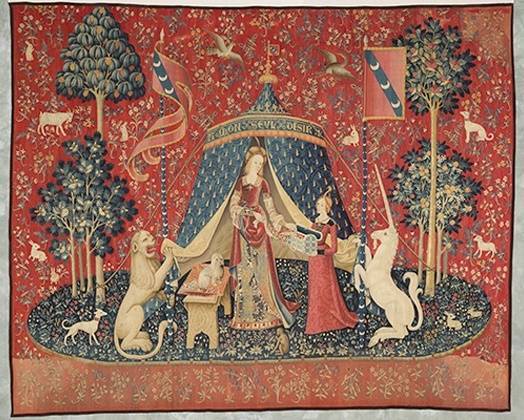
"According to my only wish."
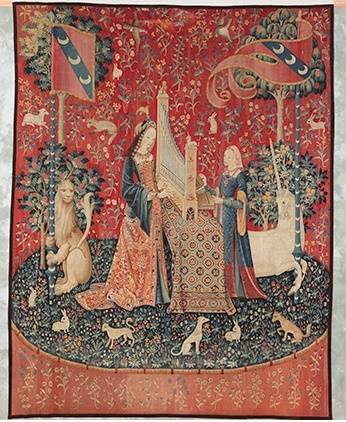
"The lady with the unicorn. Hearing"

"The lady with the unicorn. Touch"

"The lady with the unicorn. Smell."
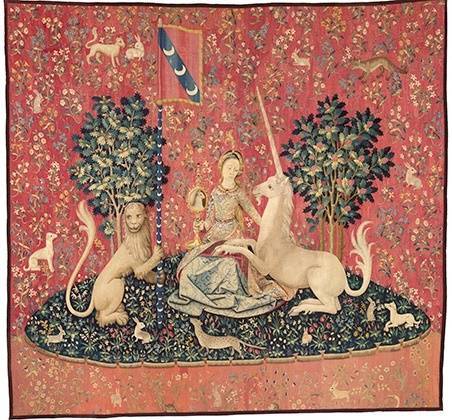
"The lady with the unicorn. Vision"
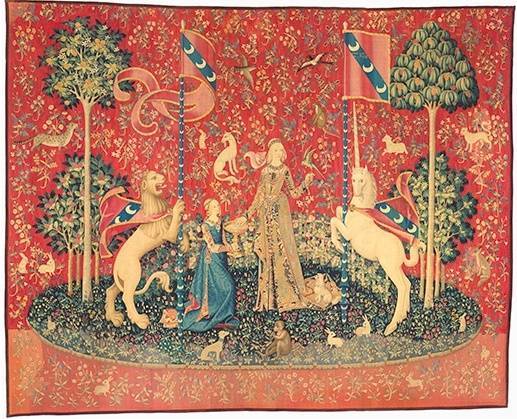
"The lady with the unicorn. Taste"
14K notes
·
View notes
Text

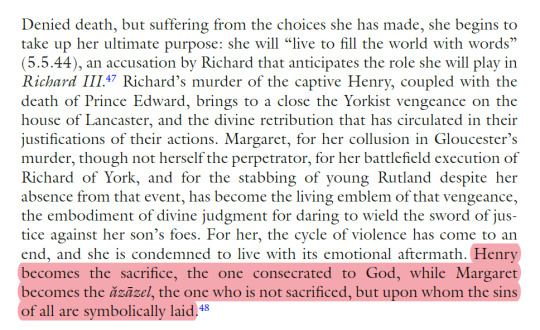
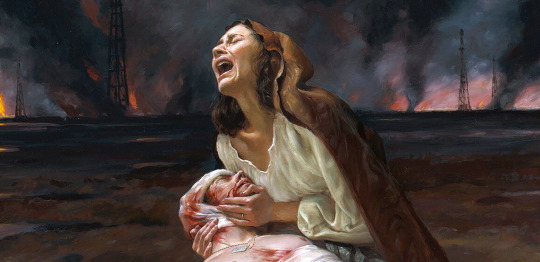

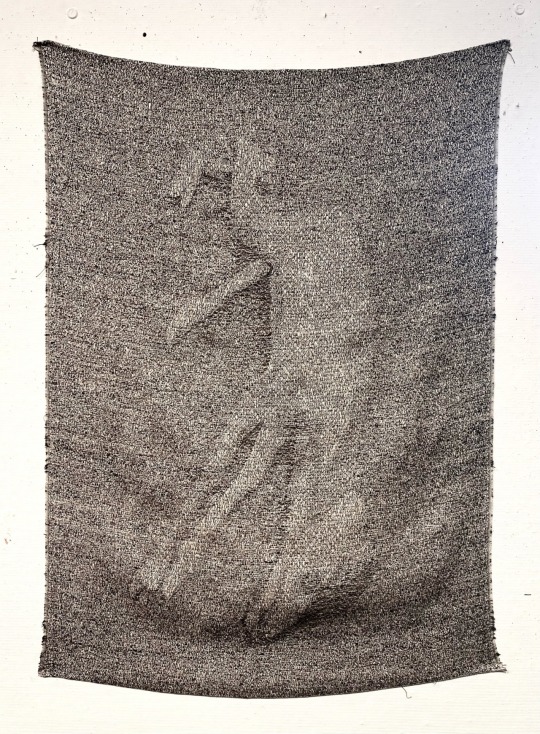

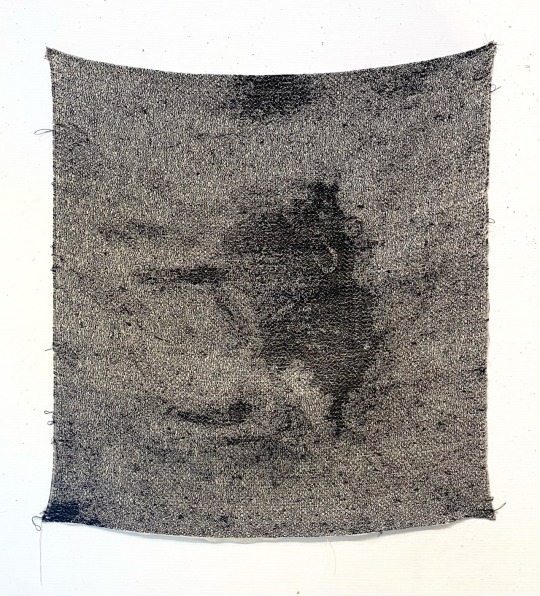
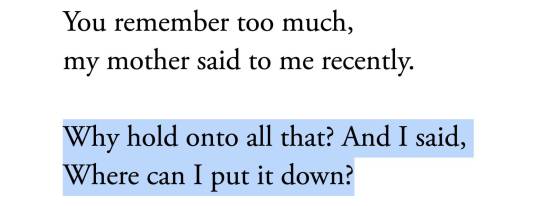

Margaret of Anjou After Tewkesbury
Niccolò dell’Arca, Lamentation over the Dead Christ (figure of Mary Madgalene), 1463 | Sandra Logan, Shakespeare's Foreign Queens: Drama, Politics and the Enemy Within | Max Ginsberg, War Pieta (detail) | Livi Michael, Accession | Anneliese Merrigan, To All the Bodies I've Dreamt of Carrying in Absence of Yours | Anne Carson, 'The Glass Essay', Glass, Irony & God | Margaret (Katy Stephens) and the remains of her son, Richard III (RSC, Michael Boyd 2007).
29 notes
·
View notes
Text
I've finally figured out why I get so irked by the whole "Edward was illegitimate because his father didn't legally recognise him when he was born" thing.
There's this cultural narrative that parents will always break from their illness at the sight/sound of their children. It's a bit ridiculous, but it is so embued in our society that when it doesn't happen we get suspicious.
So I don't know whether we should accept that Edward wasn't really Henry's child simply because the sight of his son didn't magically fix his severe catatonia.
38 notes
·
View notes
Text
It's 2024. Authors writing novels about the Wars of the Roses should be past referring to Henry VI as "mad Henry". Especially if they're Ricardians who end the novel with two pages where the protagonist/POV character foretells and decries the horribleness of Tudor-era ableism towards Richard III.
The author clearly understand that ableism is wrong and that "period accuracy" is no excuse for ableism. But still sees fit to mock Henry VI for his mental illness, to make it his main identity. Is it because ableism is okay when a Yorkist does it or when the victim is Lancastrian? Is it because ableism is okay if you're mocking someone with a severe mental illness instead of a physical disability?
43 notes
·
View notes
Text
"In the medieval imagination there was a constant tension between the idea of women’s changeable, corrupting, Eve-like influence in the world; the sense of their childlike inability to govern themselves or to be responsible for their behaviour; and the ideal of the vulnerable lady and mother who might intercede, Madonna-like, to create peace."
-J.L. Laynesmith, "Cecily Duchess of York"
9 notes
·
View notes
Text
I'm getting so sick of major female characters in historical media being incredibly feisty, outspoken and public defenders of women's rights with little to no realistic repercussions. Yes it feels like pandering, yes it's unrealistic and takes me out of the story, yes the dialogue almost always rings false - but beyond all that I think it does such a disservice to the women who lived during those periods. I'm not embarrassed of the women in history who didn't use every chance they had to Stick It To The Man. I'm not ashamed of women who were resigned to or enjoyed their lot in life. They weren't letting the side down by not having and representing modern gender ideals. It says a lot about how you view average ordinary women if the idea of one of your main characters behaving like one makes them seem lame and uninteresting to you.
19K notes
·
View notes
Photo

Henry VII and Elizabeth of York, detail from John Cabot and His Son, at the Court of Henry VII by John Adam Houston, 1862.
476 notes
·
View notes